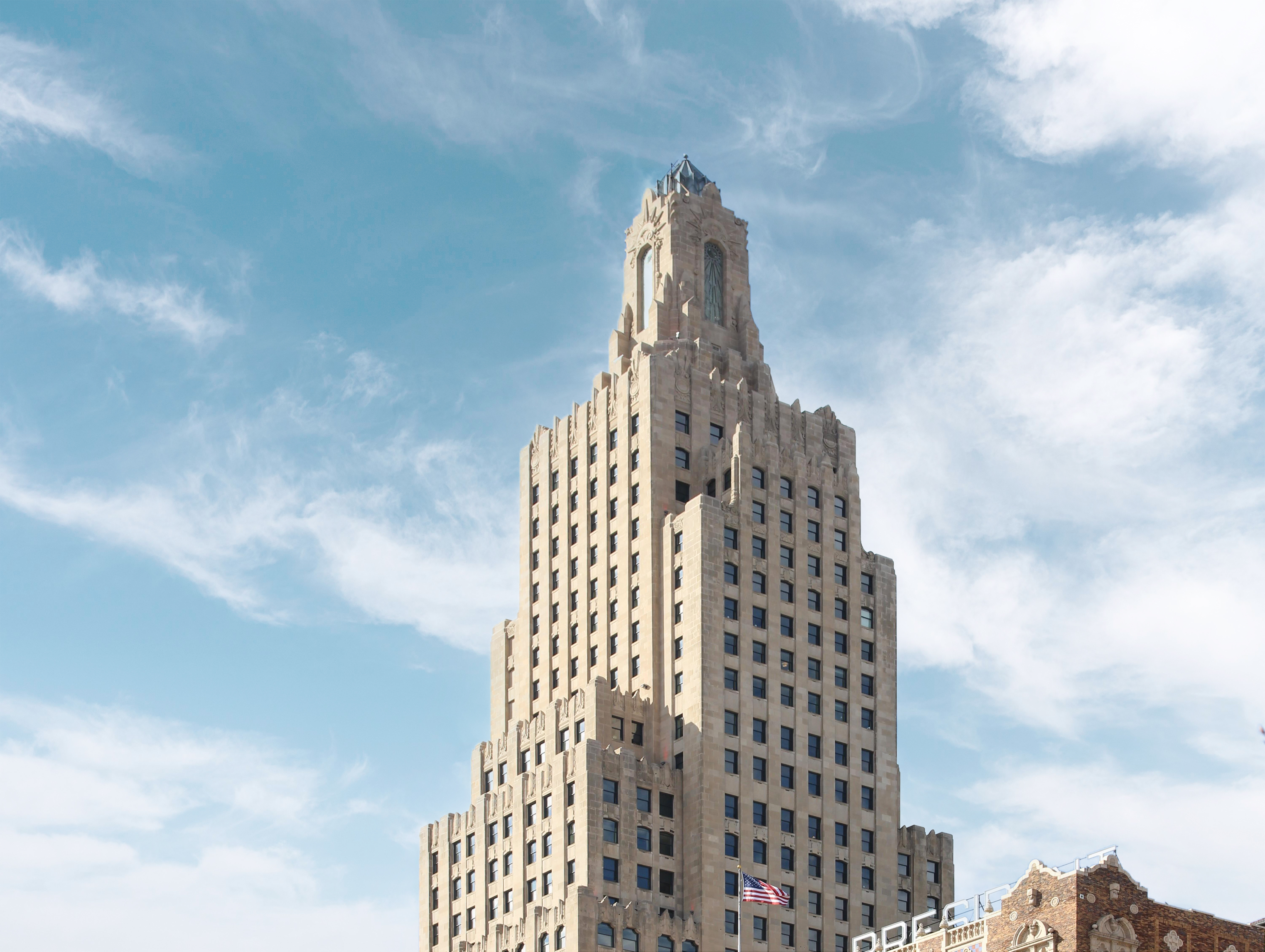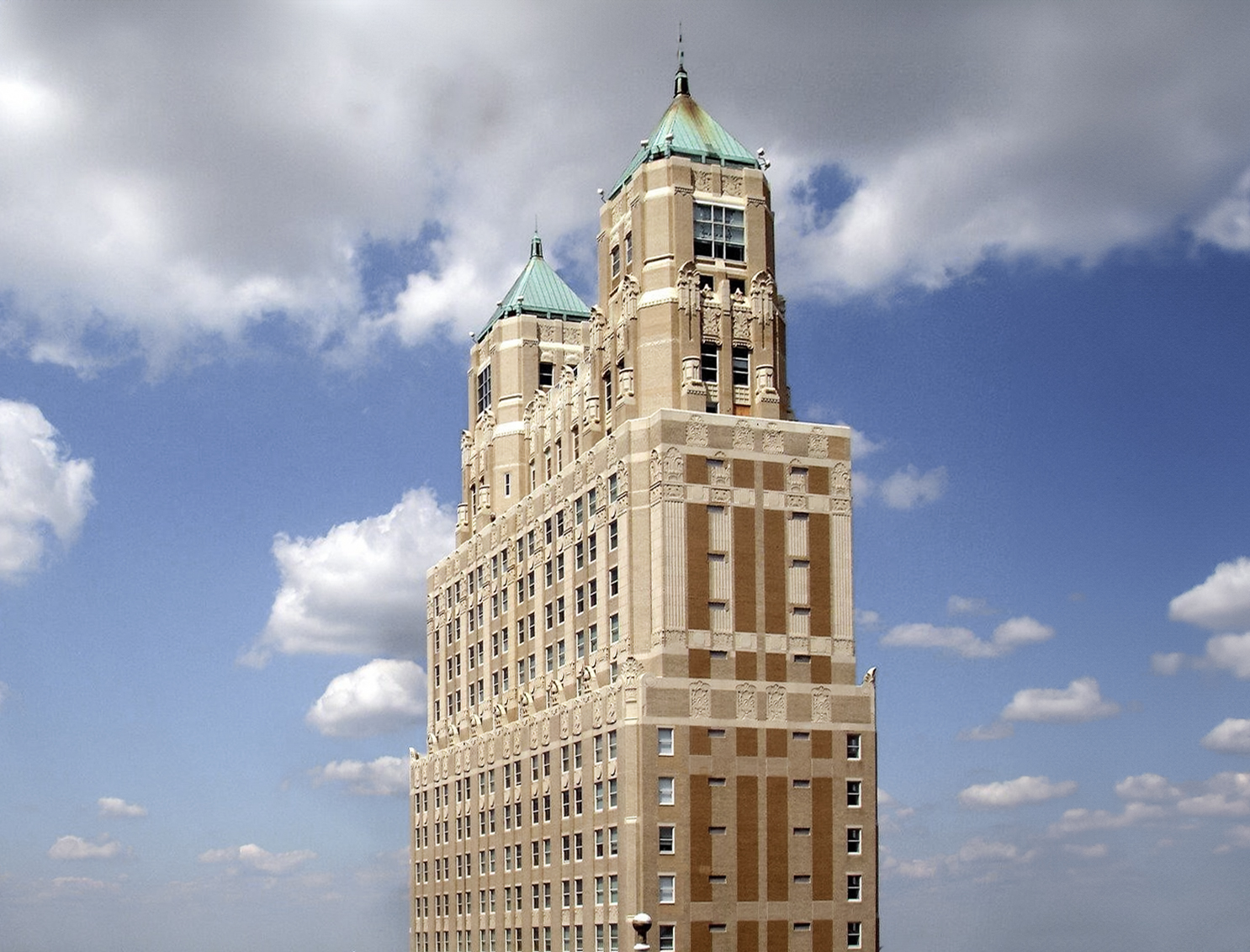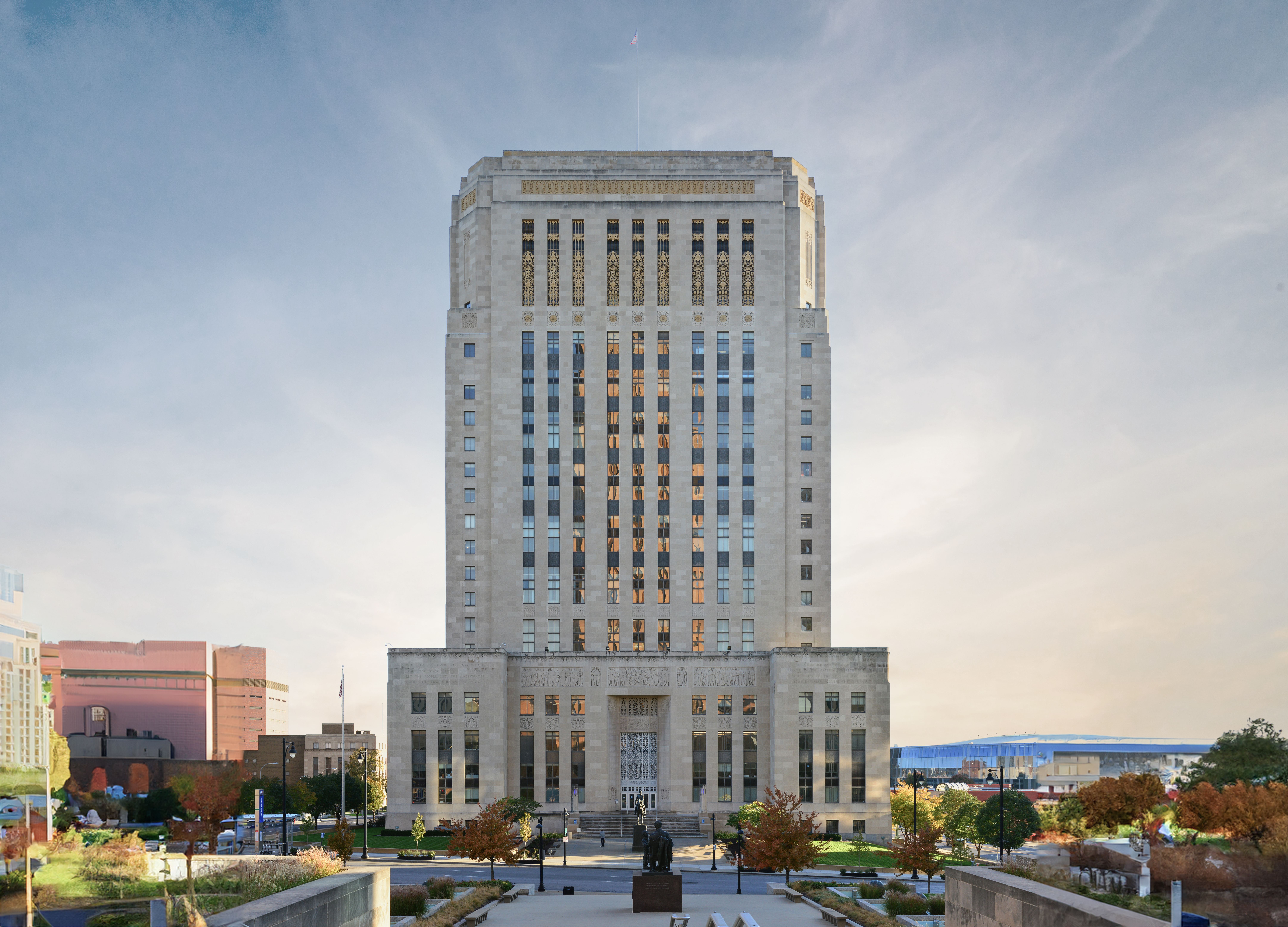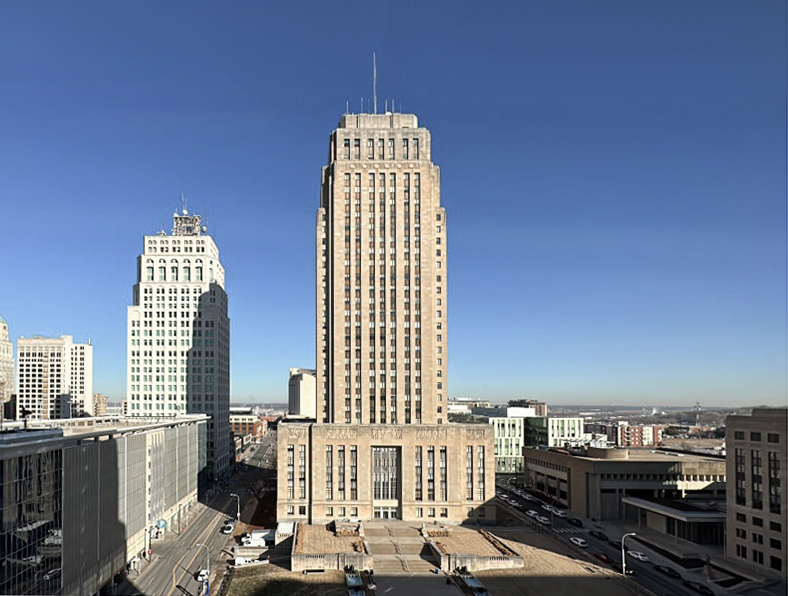The Kansas City Power and Light Building is an Art-deco skyscraper designed by Hoit, Price & Barnes, and built between 1930 and 1931 in Kansas City, MO.
Kansas City Power and Light Building is not the only name you might know this building by though. It is common for companies to want to attach their names to iconic buildings when they move in, or for the general public to come up with nicknames, and this one is no exception. The Kansas City Power and Light Building is also known, or has been known as, KCP&L Building, Power and Light Building, or Power & Light Apartments.
Its precise street address is 106 West 14th Street, Kansas City, MO. You can also find it on the map here.
The Kansas City Power and Light Building is a structure of significant importance both for the city of Kansas City and the United States as a nation. The building embodies the distinctive characteristic features of the time in which it was built and the Art Deco style. Because of that, the Kansas City Power and Light Building was officially included in the National Register of Historic Places on January 9th 2002.
At the time of its completion in 1931 the Kansas City Power and Light Building incorporated solutions that were quite advanced at the time, these included a full-blown gymnasium on the 6th floor with spectator seating where employees could practice indoor basketball, volleyball, wrestling, boxing, and baseball. We might be used to startups having ping-pong tables at their offices today, but back in the 30s this was unseen!.
The building underwent a major restoration between 2014 and 2016. The architect commissioned to undertake this restoration was NSPJ Architects.





